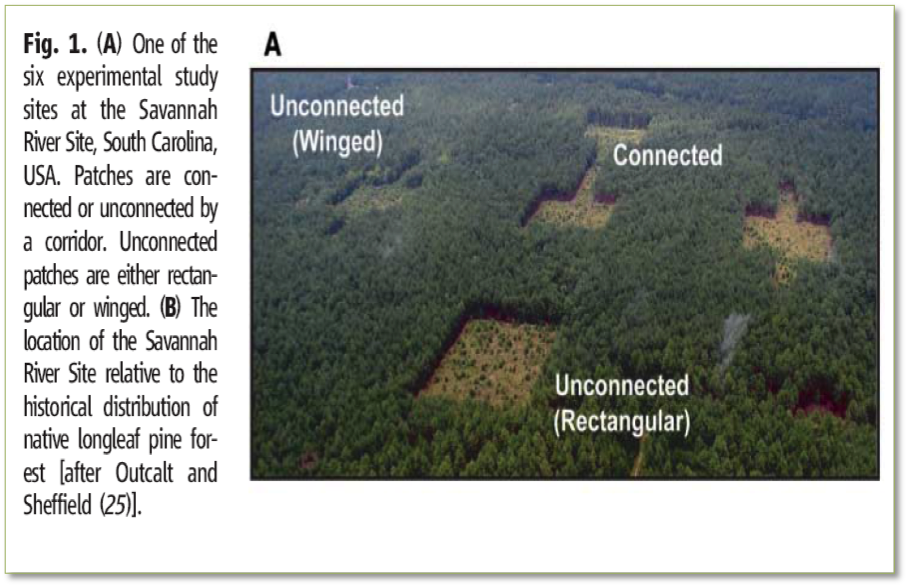Habitat
Conservation Planning
November 12, 2015
Overview
*Components and Threats
*Local Example
*Planning Mechanisms,
Old and New
"We abuse land because we see it as a commodity belonging to us. When we see land as a community to which we belong, we may begin to use it with love and respect." - Aldo Leopold
Leopold's Land Ethic
Landscape Ecology
- "Emphasizes the interaction between spatial patterns and ecological processes, that is, the causes and consequences of spatial heteorogeneity across a range of scale." (Turner, 2001)
- "Concerns organisms and their interactions with configurations and type of landscape elements"

Landscape Components

Urban Example
Habitat Planning
- Configuration of spatial elements relative to need, both human and natural
- High level goal: maintain heterogeneity and biodiversity
- Difficult to plan for mobile wildlife but simpler to plan for sufficient habitat
- Something to consider: urban planning as habitat planning for humans
Threats
-
Fragmentation
-
Erosion to Development
-
Poor Management
-
Lack of Adaptation
-
Introduction of Non-Native Species

Land Configuration Matters
-
Patch size
-
Patch shape
-
Patch connectivity
-
Patch structure


Patch Shape

Patch Shape Cont.
Patch Connectivity

Patch Structure

Planning for Connectivity
Factors to consider when prioritizing conservation:
- The forces and motivation creating a species' need to move (natural vs. unnatural, esp)
- The possible avenues of movement
- The target or destination of movement



Text
Culverts and non-temporary walls finished in 2010 after 10 years of lobbying



Text
Highway 27 north of TLH became one of the most deadly roadways in the world for turtles. In Feb 2000, 90 killed in just a single day.
Methods of Assessment
- Habitat Inventories
- Gap Analysis
- Determine areas with high biodiversity potential
- Compare with existing management practices to identify gaps
Goals of Implementation
- Maximize open space and protect the most valuable wildlife habitat
- Retain and plant native vegetation
- Provide habitat enhancements through connection
- Educate residents and give opportunities for engagement and observation
Methods of Implementation
- State Wildlife Action Plan
- In Florida, updated every 5 years. Last in 2012
- http://myfwc.com/media/2663010/StateWildlife ActionPlan.pdf
- Mechanism for prioritizing and administering funds
- Habitat Conservation Plans
- Authorized under Endangered Species Act when projects show potential for negative impact
Habitat Conservation Plans
- Intended to find balance between habitat conservation and land use development when taking occurs
- At minimum they require:
- the impact that will likely result from the taking
- what steps applicant will take to minimize and mitigate such impacts, and the funding that will be available to implement such steps
- what alternative steps were the applicant considered and reason why they were not selected
- other measures the department may considered necessary or appropriate

More info: http://www.flbeacheshcp.com/docs/FLBHCP%20Primer.pdf

NGO Efforts

Alternative Strategies: Large Land Holders as Plan Makers
- In 2011, 10 companies owned almost 10% of the state; significant power to influence land use & conservation and key players in the future of the state
- Top Three in 2011: (1) Plum Creek Timber, (2) St. Joe Company, (3) Foley Timber Co.
- "A central lesson derived from the St. Joe case study is that government with large landowners in its jurisdictions should view these landowners as potential assets to plan-making processes." - Dr. Tim Chapin, FSU


Optional Sector Plan: Regional Scale Thinking
But, land changes, hands!
http://www.reuters.com/article/2013/11/08/usa-florida-mormons-idUSL2N0IT2AZ20131108#bHeyXGbW71J3MFk4.97
Emerging Habitat Conservation Tools
A Drone's Eye View:
https://www.ted.com/talks/lian_pin_koh_a_drone_s_eye_view_of_conservation?language=en
Habitat Conservation Planning November 12, 2015
HabitatConservation Planning
By Lucas Lindsey
HabitatConservation Planning
- 1,043



